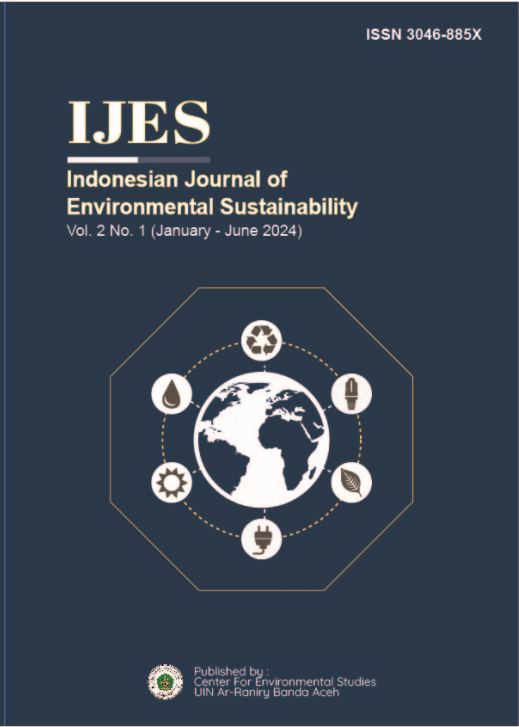CAPABILITY OF GREEN OPEN SPACE VEGETATION REDUCING CARBON EMISSIONS IN THE TRANSPORTATION SECTOR (CASE STUDY OF THE SIMPANG JAM AREA IN BANDA ACEH CITY)
DOI:
https://doi.org/10.22373/ijes.v2i1.4835Keywords:
Transportation Carbon Emissions, Vegetation Absorption, Urban Green Open SpaceAbstract
The area of Bundaran BNI 46 Simpang Jam in Banda Aceh is an area that is often crowded with motorized vehicles. Motor vehicles produce CO as their exhaust gas. Excessive levels of CO in the air can harm human health. CO can turn into CO2 in the air. Overrated CO2 in the environment can cause greenhouse gas effects and global warming. CO2 can be absorbed by plants for their use in the photosynthesis process. The absorption of CO2 for each vegetation is different starting from very high to low. This research is a quantitative study to determine the total absorption capacity of vegetation in the area of Bundaran BNI 46 Simpang Jam on CO2 emissions which was done on April 2020. Calculating vehicle emissions and vegetation absorption using manual counts method at peak hours and calculations based on literature. From the research, it is known that the total number of vehicles passing through the area is 3250 motorized vehicles/hour with total emissions of 7,343,017,347 Kg/year. The total absorption capacity of 351 vegetation in that area is 614,410.30 kg/year. Accordingly, the area's vegetation is unable to absorb CO2 emissions optimally. To optimize CO2 absorption, vegetation replacement must be carried out. The tree combinations that can be selected to absorb all of the area's CO2 emissions are 320 Trembesi, 326 Kasia, 340 Glondokan, 305 Kenanga and 215 Beringin.
















